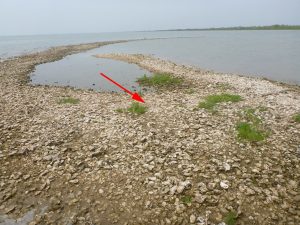By Susan Heath
On Monday, Alan and I went out to Bastrop and Drum Bays to do a reef survey and of course we checked on the oystercatchers while we were out there. It was cold! I was back in long underwear, waders, and two coats. 50 degrees with a north wind is not fun on a boat!
In 2011 when I started the oystercatcher study there were three pairs of birds nesting in Bastrop Bay and six pairs nesting in Drum Bay. Today we found the males of three of those pairs and three young birds that were just hanging out. Each time we found an adult male I figured we’d find the female on a nest but we never did. The reduction in the number of pairs is a sad result of island erosion. The birds simply don’t have any place to nest so they leave. The pairs that are hanging in there are trying to use the last scraps of island habitat left where they aren’t at risk for predation from mammals but they are rarely successful.
We also saw this.
This is the second time we’ve seen this guy out here and I have no idea what he’s doing. He flies very low along the GIWW islands that run between Drum, Christmas, and Bastrop Bays and then he lifts up and leaves. Wish I knew what that was about.
Since we were out there, we went up to Alligator Point Island which is at the very western end of West Galveston Bay to check on the pairs we found there a couple weeks ago. We found only one pair this time, C0A & unbanded, and they still didn’t have a nest.
On Wednesday, I checked out West Galveston Bay with Alan, Dr. Steve Alexander (Texas A&M Galveston) and one of Dr. Steve’s students, Hayley. The wind was supposed to pick up in the afternoon so we headed up to Swan Lake right away. Just as we were leaving the boat ramp we saw this handsome fellow or gal.
We discovered that LR & unbanded finally decided it was time to nest and they had two gorgeous eggs. In Swan Lake proper we solved the KK & unbanded mystery because we found they had a new nest. Obviously their previous one failed and they weren’t hiding chicks from us after all. I blame the white pelicans and their big old feet.
There was no sign of R5 & X3 and L5 & unbanded were in their territory again so I guess L5 has finally moved up in the world. We’ve been watching him struggle in an unsuitable territory for several years now. It will be good to see him succeed (hopefully he will) but it’s sad to know that something must have happened to R5. He was banded as an adult in 2011 and so was getting pretty old. RIP dude.
We got stuck for a little while getting back to West Galveston Bay because the railroad bridge was down but just when I was reaching my frustration point and considering whether the t-top would fit under, they raised the bridge. Phew. We have been watching a pair on a tiny island along the channel to Tiki Island and last week we found they had two eggs. As predicted the eggs were gone this week due to overwash but that gave us a chance to try to trap them with the noose carpets. We got the carpets all set up and then we had to go find where the birds went and spook them so they’d fly back. That proved to be quite a chore as they went to separate places and when spooked kept going to different reefs. My patience was tested again but we finally got them both to go back and before we could even get over there to watch they BOTH got caught in the noose carpets! I’ve only caught both members of a pair in the noose carpets at the same time twice before so that was very lucky. We banded them C2A & E0A. Here are Dr. Steve and Hayley holding the happy couple.
On Struve Luci we found that HM & X7 no longer had a nest on the rock wall (likely mammal predation) but now had one on the island. That’s a much better spot as long as we don’t get a high tide. It was time for 12 & unbanded’s nest to be hatched but they weren’t acting like they had chicks. They are very sneaky though so we’ll keep watching them. L9 & unbanded were still incubating. The Black Skimmers are returning!
On Jigsaw T5 & T6 were now incubating two eggs. I’m not sure how that’s going to work out since they laid them more than a week apart. We’ll see though. Maybe they know something I don’t. The other two pairs, YE & unbanded and LH & WW both finally had nests each with two eggs. YE & unbanded were incubating but LH & WW were both out on the reef. Um, I don’t think that’s how it works guys. I’m assuming they got off the nest because we bothered them. We left them to their business and continued on ours.
I’m very happy to report that 16 & unbanded had three eggs this week! We could see them from the boat so we didn’t get off since they are on Galveston Island proper in a mammal infested area.
There weren’t any birds on the docks for a change so we headed down to Gangs Bayou where we found two more new nests. JX & unbanded have a nest with one egg that JX was incubating. JX was banded as a chick so we don’t know who is the male and who is the female in this pairing. If we can catch the other bird, we may be able to tell then. Their nest is on the island. A5A & unbanded also had a new nest but theirs had two eggs and it’s on one of the “pimple mounds” that TPWD created when they built the breakwater. If we don’t get a high tide, they might make it with that nest.
A1A & unbanded tried it last year and got overwashed but you just never know what the weather’s going to be.
We headed over to South Deer where I was fully expecting to find KK & unbanded back in their territory since they weren’t on the docks but no they weren’t there! This is the third or fourth week they haven’t been present and I have no idea what’s going on there. I have never seen a pair abandon a territory during the breeding season and their territory is a prime one so it makes no sense. They must be going back there some though or another pair would have moved in so we’ll just have to keep watching.
We moved on to check on LL & unbanded and see if we could get a glimpse of their chicks. That was a no go though. One of them was standing near some vegetation probably guarding the chicks and the other one flew out and circled the boat giving off warning pips. Ok, ok! We get it. You have chicks. We left them alone and moved on. We’ll see the chicks eventually. When we got to XA & unbanded’s territory we saw only one of them out on a reef. We searched the shoreline with our binoculars but didn’t see the other bird. A search of the area did not reveal a nest but suddenly both of them were on the reef. Sneaky, sneaky. We’ll have to look again next week. The White Ibis have begun to arrive for nesting but they weren’t close to where the oystercatchers nest yet.
JN & UW were still incubating and chasing off gulls and terns. I managed to look in the right place for them this week!
We headed over to North Deer and found all four pairs with identified nests still incubating. W5 & unbanded, the fifth pair, looked like they had a nest (they looked that way last week too) with one of them sleeping alone the shoreline and the other laying up on the shell as if on a nest but when we checked we could not find any eggs. Doesn’t this look like an oystercatcher on a nest?
I’m confused by that! Over on Marker 52, JJ & P4 were hanging out eyeing the mass of pelicans and gulls that they have to contend with. 23 & WY were still incubating and H0 & JC had a new nest with three eggs. They’ve been busy! It is typically placed next to a piece a lumbar which made me chuckle. Oystercatchers almost always put their nests near a piece of wood or a small scrape of vegetation.
28 & AP also had a one egg nest that they weren’t incubating yet. We saw them run off a couple gulls though! You go guys! We headed down the GIWW to check on ET & A8A but they weren’t home so we headed to Jones Bay for our last few checks. CA & Y2 now have three eggs amongst the Caspian Terns. Here’s hoping that strategy keeps the gulls away.
When we arrived at P3 & unbanded’s island we found that FR was there with an unbanded bird again and there was no sign of P3. Sigh. P3 has been missing for three weeks now so I guess it’s time to concede that he is no longer among the living. I banded him in 2011 in that territory and he’s been there ever since so there’s no reason to believe that he would just up and leave without something dire happening. I’m wondering if something happened to him while he was protecting his chick. We only saw the chick that one week so something happened to it too. P3 fledged seven chicks in the last eight years! I’m going to miss him. Here’s P3 in better days.
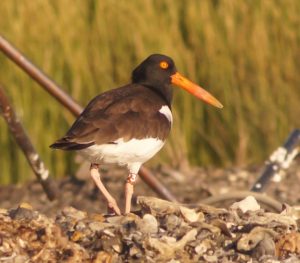 photo by Alan Wilde
photo by Alan Wilde
So FR has taken over P3’s territory. Did he also take over P3’s mate or did he bring his mate with him. Since both females are unbanded there is no way to know for sure. In FR’s old territory, an island that much too low for successful breeding, we found XU with an unbanded bird. When an adult disappears, it doesn’t take long for another one to move in which is why I’m so perplexed about the KK situation.
On Friday, Taylor Bennett and our new Education and Outreach Manager Jennifer Horton joined me for a tour of East Matagorda Bay. It was warm folks! I didn’t have to wear waders or a coat. Man that felt good. It also wasn’t windy at least when we started and I very much appreciated the smooth sailing. We didn’t find any oystercatchers until we got to the Chinquapin Islands. There we found A6A with an unbanded bird which means KN probably moved on. They didn’t have a nest though.
At the Oyster Farm we found an unbanded bird incubating a single egg with no mate present. I guess we’ll have to wait til next time to see who the mate is. On the other island there we found an unbanded pair. What happened to KM? That pair didn’t have a nest yet but they were selecting shells so I guess it won’t be long. While we were checking them out a fog bank moved in. I wasn’t too keen on trying to cross the bay in fog so we set up the noose carpets and caught the male. He is now C3A! Here’s Jennifer and Taylor holding this handsome fellow.
By the time we were done with him, the fog had cleared so we headed to the west end of the bay to check on LC & R9. We found LC incubating two eggs. Yeah! R9 wasn’t there but we saw them together on the beach a few weeks back so I know they are still paired. We headed back to Old Gulf Cut and found 25 & unbanded incubating three lovely eggs. Their island is super low now though so I hope we don’t get any high tides.
Across the channel 17 & unbanded had a two egg nest. Woohoo, nests all around! I thought we were done for the day but we had another surprise along the GIWW. We found ER & unbanded who had disappeared from the Chinquapin Islands on a small peninsula that sticks out from one of the large islands along the GIWW. I have seen both pigs and coyotes on that island so I hope these guys can make a go of it there. They were incubating one egg. We left them be and continued on our way back to the boat ramp. Suddenly our beautiful day turned windy and cold and by the time we got back to the boat ramp the fog had moved back in. Phew! Got there just in time.
This project is supported solely by donations and small grants. If you’d just like to make a donation (thank you!) you can do so on our website here.
Current Stats for upper Texas coast from Dickinson Bay to East Matagorda Bay: 25 nests being incubated, 13 failed nests, 1 nest with unfledged chicks, 1 nest with undetermined status, 0 chicks fledged
Note: All trapping and banding for this project is in accordance with federal and state permits issued to Susan Heath, GCBO Director of Conservation Research. Bird handling by volunteers is only permitted in the presence of Susan Heath and volunteers are trained in proper bird handling techniques.

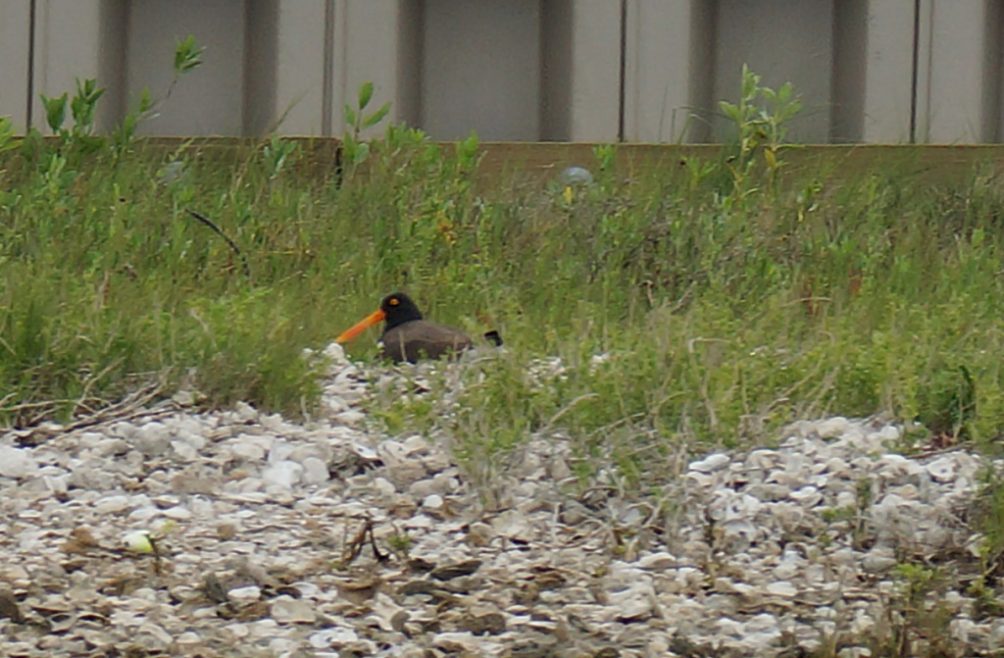
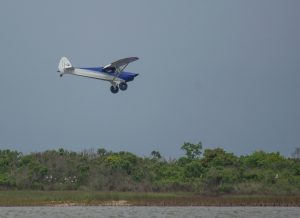
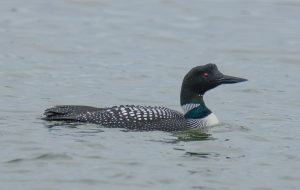

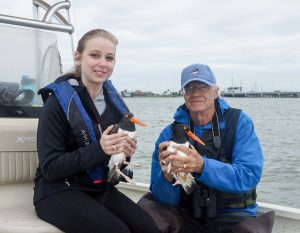
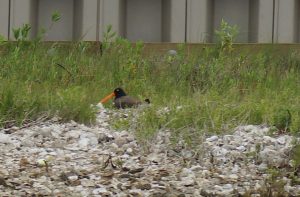
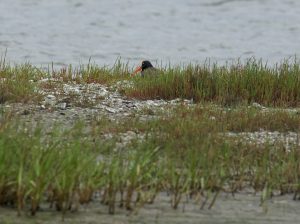
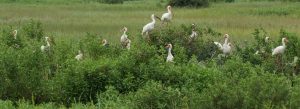
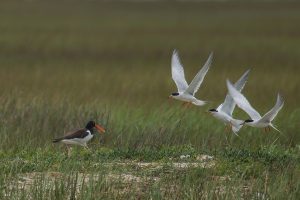
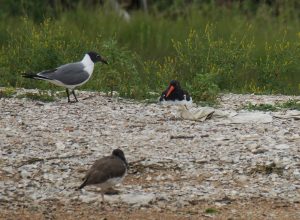
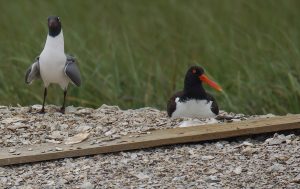

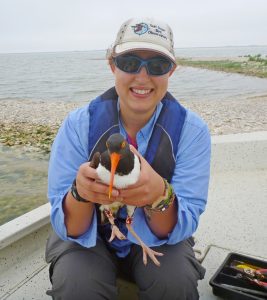 photos by Susan Heath
photos by Susan Heath